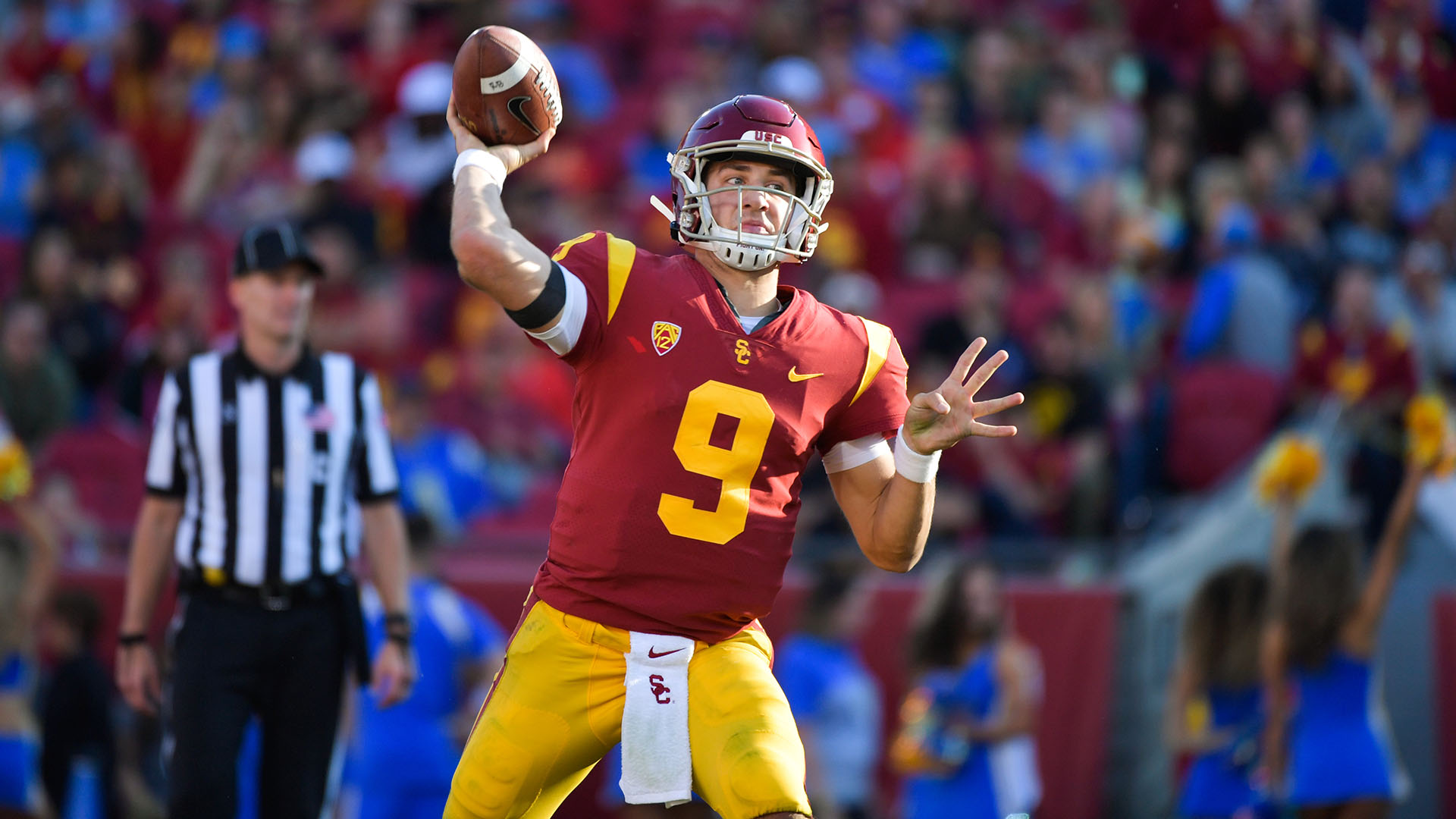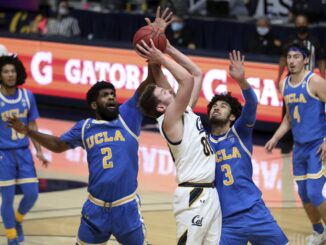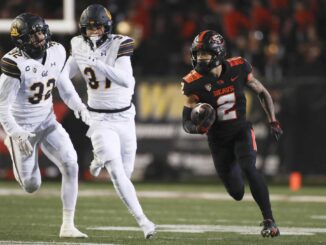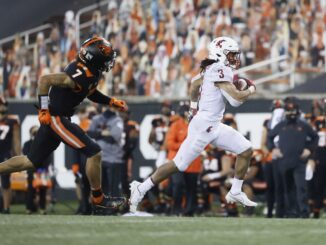
There are many quarterbacks in college football who have been discussed as candidates for the 2020 Heisman Trophy award. My goal today is to determine if the PAC-12 has any candidates, and if not, how close some could get.
Last year, quarterback Joe Burrow of LSU had such overwhelming stats that it was easy for Heisman Committee voters to name him the winner.
But usually, there are no canaries in the coal mine and Heisman members must sort through dozens of statistics and factors to separate one candidate from another. As much as their review centers around what candidates did, I think it also comes down to what candidates did not do.
For example: If you have a quarterback who passed for nearly 3000 yards, ran for over 500, completed more than 60% of his passes, played in all 12 games, and won eight, you might consider him worthy of consideration. But, would you feel the same once you knew his interception rate (2.8) is among the bottom-third of returning, measurable quarterbacks? If not, then you wouldn’t want Jamie Newman of Georgia (formerly Wake Forest) and you wouldn’t want him as the representative of your prestigious award.
It is that element of elimination that I want to look into because I think it is an essential part of the logic that Committee voters use to make their assessments. If we can identify some thresholds that Committee voters feel are essential for their winner, then we might be a step ahead in predicting how they will vote a few months from now. And if today’s exercise looks promising, we’ll come back to it again in October, plug in updated statistics, and see if we can predict the Heisman Committee’s top quarterbacks a month before that Committee even votes.
To get things started, I’ve chosen six thresholds to review. To keep things simple, I’ve chosen to award one point for each threshold that a quarterback surpasses. I don’t expect you to agree with all that I’ve chosen because, quite frankly, I’m not sure I agree with all of it either. But, it should give us a start and if we like our results, we can refine our steps at a later time.
The six elements of data and their thresholds are:
1. Recent data: Candidate established sufficient data in 2019
2. Contribution: Candidate played in at least nine games
3. Completion accuracy: Had 60% or more completion ratio
4. Passing yardage: Totaled 3000 or more passing yards
5. Interception percentage: Interceptions were less than .022 of attempts
6. Rushing yards: Rushed for 500 or more yards
I’m not sure that giving a full point for those quarterbacks who ran for more than 500 yards is fair to others who are not dual-threat in nature. Those who run can earn six thresholds while those who can’t run can only earn five. I’ll solve this problem over the summer but for now, we’ll leave it at a full point with the agreement to consider non-dual threat quarterbacks with five thresholds as somewhat equal to the six thresholders.
Perhaps we should make rushing yardage a half-point and add another half-point for teams that won eight or more games.
Since we have 130 teams and we only have six levels to slot them into, we can expect a great deal of bunching. To separate them, I’ve plugged in a “quarterback efficiency” algorithm used by our prediction system (Savvygameline) so that we can sort results with finer detail. Two days ago, I applied this method to study all FBS quarterbacks (seen here) and learned that only Trevor Lawrence of Clemson and Ian Book of Notre Dame passed all six thresholds. The PAC-12 doesn’t have any above four. That doesn’t mean that the Conference is out of the 2020 Heisman game. After all, we’re using 2019 stats. Besides, we’ve found one who may be primed to leap past six thresholds if he doesn’t get injured.
Here are the PAC-12 quarterbacks in the order in which they finished:
1. KEDON SLOVIS, USC (4 thresholds, national rank 12th)
Kedon Slovis is 12th-ranked nationally and that puts him close enough to the top to make him a legitimate Heisman contender, especially when we notice that three above him are from non-Power Five conferences and we know that it’s been more than 40 years since a non-Power Five player won the award.
Slovis has three obstacles to overcome if he is to keep up with the likes of Trevor Lawrence and Ian Book: 1) he must prove he can play a full season without injury; 2) he must release the ball earlier; 3) he must reduce his worse-than-average interception rate (2.3).
Despite being #1 on this Heisman assessment, he is not the Conference quarterback who is most likely to vault into the Heisman limelight.
2. JAYDEN DANIELS, ASU (4 thresholds, national rank 25th)
Although Daniels finished second in this Heisman evaluation, he is the PAC-12 quarterback who has the most potential to leap into the Heisman spotlight. He is also the quarterback that I believe our Index will name as the top returning quarterback in the PAC-12 once college football gets back in action and we can identify more of the nation’s starters.
He has some work to do to make that leap because Heisman Committee voters will certainly eliminate him straight away if he misses more games because of injury. After that, Daniels must find a way to come up with more passing yardage and more yardage per attempt.
3. CHASE GARBERS, CALIFORNIA (4 thresholds, national rank 27th)
I was surprised to see Garbers finish 3rd on this list and even more surprised that he is 27th in the nation.
Although he has a history of missing games, low completion rates, and too many interceptions, he began to turn much of that around in 2019. In fact, Garbers’ 1.4% interception rate is second best among returning PAC-12 quarterbacks.
With a career passing yardage of just 3,278 yards in two seasons, he falls far short of Clemson’s Trevor Lawrence who has 6,945 yards in the same time frame.
The fact that Garbers surpassed four thresholds makes me wonder if this threshold thing is giving us an early alert for quarterbacks who have been previously overlooked but shouldn’t be in 2020. I plan to watch Garbers close in 2020 to find out.
4. GRANT GUNNELL, ARIZONA (3 thresholds, national rank 35)
Gunnell didn’t begin 2019 as the starter for the Wildcats and he wasn’t able to put up enough stats to pass many thresholds. Nonetheless, he finished 35th in the nation in today’s study and that is a noteworthy accomplishment.
Despite being a pure freshman, Gunnell’s quarterback efficiency sub-rating is quite high. His primary problem is that his long ball effectiveness has been quite low.
5. DAVIS MILLS, STANFORD (3 thresholds, national rank 37th)
When Mills committed to Stanford, he was rated the top prep quarterback in the nation by both major recruiting services. It took three years for him to become the starter and that happened only because K.J. Costello went down with an injury and then transferred. Mills’ efficiency rate is high but his ability to stretch the field or lead Stanford to wins are noticeable shortcomings.
6. JAKE BENTLEY, UTAH (3 thresholds, national rank 44th)
Bentley was good enough to lead South Carolina during three seasons but not good enough to hold the 2019 starting job against freshman Ryan Hilinski. If he wasn’t the best quarterback on his own team, why should we think he will somehow be among the best quarterbacks in the nation?
7. ANTHONY BROWN, OREGON (thresholds 3, national rank 68th)
The only reason we’re placing Brown ahead of Tyler Shough is because Brown has measurable and reasonably reliable stats while Shough does not.
To get close to the Heisman, Brown must finally prove he can play a full season while also getting his completion rate over 60%. He’s been improving but his career is not that of a Heisman finalist and I think even if he gets some recognition, he will be eliminated quickly for that reason.
See “7b” below for more on Tyler Shough.
8. DORIAN THOMPSON-ROBINSON, UCLA (2 thresholds, national rank 73rd)
DTR falls short of the Heisman in just about every statistical category we are reviewing. The only reason he doesn’t finish lower than 8th in today’s Conference review is because none of the remaining quarterbacks have enough stats to make them meaningful candidates.
OTHERS:
7b. TYLER SHOUGH, OREGON
Tyler Shough has as much chance of being the starter at Oregon as does Anthony Brown and there are two good reasons for thinking so: 1) he has already proven his effectiveness as a runner, and 2) new offensive coordinator Joe Moorehead thrives on dual-threat play-callers.
9. TRISTEN GEBBIA, OREGON STATE
If we were to translate Tristen Gebbia’s stats to a full season, he would pass four thresholds, be ranked in the top 40 nationally, and ranked 6th in the Conference. He has demonstrated his ability but, so far, coaches have not demonstrated their willingness to name him their 2020 starter.
Washington, Washington State, and Colorado all have new coaches and no returning quarterbacks that we can measure. Washington appears to be in the best situation since it promoted internally and it has quarterback Jacob Sirmon who has at least some experience.
It will be interesting to revisit this after the 2020 Heisman winner has been chosen. I don’t expect all five of the finalists will be quarterbacks, but there should be enough information for us to see how well we did in predicting the logic of the Committee using this threshold and elimination scheme.




